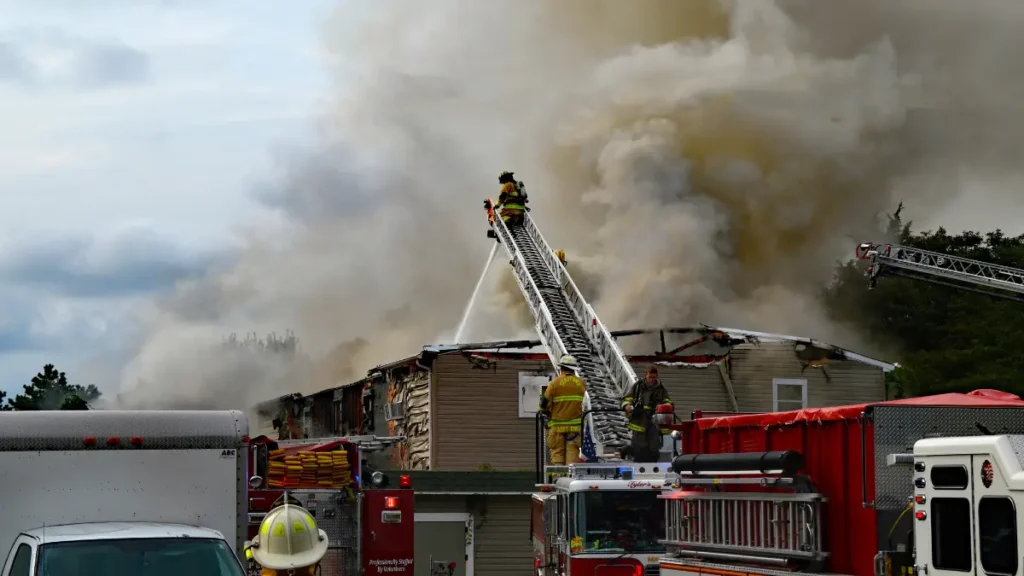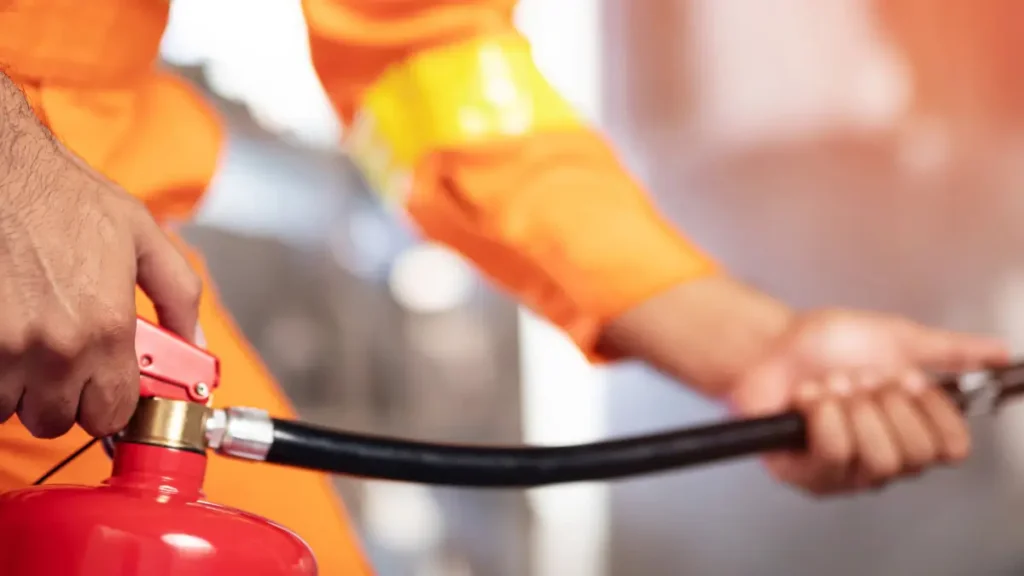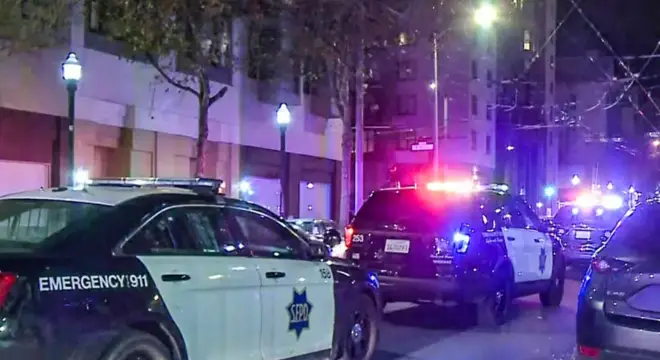Burleson Home Fire Leaves Two Dead, Authorities Investigating Cause
I want to start by giving you the clearest picture of what happened, without dragging you through long paragraphs or dramatic phrasing. Just the truth, the timeline, and why this fire hit harder than most overnight calls.
A little after 12:30 a.m., firefighters were sent to a home on NW Douglas Street in Burleson. When they pulled up, they saw what crews dread — heavy smoke pushing through the structure and flames strong enough to suggest the fire had been burning for a while before anyone called it in.
At that hour, most people are asleep. Windows are shut. Reactions are slow. Fires move quietly. That combination alone raises the stakes before any firefighter even steps out of the truck.
A neighbor stepped forward and told the crews something nobody wants to hear: “Someone might still be inside.”
That one sentence can change the entire rhythm of a response. It forces the team to drop everything else and go straight into search mode.
Firefighters did exactly that. They pushed inside the home, moving through rooms where heat builds fast and visibility drops to inches. But the house was empty.
It wasn’t until they shifted their search to the garage that they found two adults who were trapped. They were pulled out and rushed to the hospital in critical condition.
By late morning, the Burleson Fire Department confirmed that both victims had died from their injuries.
As someone who’s covered safety, home fires, and emergency response for years, this part always hits hardest — not because it’s unusual, but because it’s so brutally common. Fires at night don’t give you time. They take it away.
Before we move into the details of the search, the investigation, and what this means for homeowners, I want you to pause and think about something simple:
If a fire started in your home at 12:30 a.m., how quickly would you know?
That question alone is why this story matters far beyond Burleson.
The Search Efforts Inside the Home

When I went through the early reports, one detail from Fox4 News stood out — and it changes how you understand the whole incident. According to their report, firefighters didn’t find anyone inside the main home during the first sweep, even though all signs suggested someone might be trapped.
That’s not unusual during late-night fires. Heat pulls people toward doors, hallways, or familiar escape routes. Smoke does the rest. But what struck me here is where the victims were ultimately found.
After clearing the house, crews shifted their focus to the garage. And that’s where they discovered the two adults.
If you’ve never thought about how dangerous a garage can be during a fire, here’s the uncomfortable truth: it’s often the last place responders reach and the hardest place to search. It’s packed with storage, fuel, tools, and tight corners. And the fire’s behavior inside a garage can be unpredictable.
The firefighters removed both victims and rushed them out toward waiting medics, but anyone who has watched garage-fire rescues knows how slim the window of survival can be.
This wasn’t a slow or confused response. It was a race with almost no margin.
Deaths & Medical Status Update
The confirmation of the victims’ deaths didn’t come from rumors or unverified posts — it came directly from the Burleson Fire Department’s official Facebook page. That matters because, in situations like this, you want the most grounded and humane source available.
They shared that both adults, who were found in the garage and taken to the hospital in critical condition, died from their injuries just before noon. You could feel the weight in their wording. These updates aren’t written lightly, and departments avoid speculation for a reason — families are still being notified, and facts are still being pieced together.
What they didn’t release — at least not yet — are the names of the victims. The post made it clear that the Tarrant County Medical Examiner will share identities only after notifying next of kin.
As someone who’s followed dozens of cases like this, I can tell you this waiting period is painfully normal. Families often learn the news privately before the public hears anything, and that’s exactly how it should be.
Incidents like this echo what happened in Fairbury, where an overnight blaze forced emergency crews into another high-risk rescue situation — you can read that breakdown here: Fire Destroys Fairbury Home Overnight.
Fire Response & Containment
One part of this story I don’t want you to overlook is how aggressively the fire was tackled. A total of 21 units — from Burleson, Crowley, and Fort Worth — responded to this single-home incident.
That level of coordination doesn’t happen by accident. When dispatch hears “possible entrapment,” the response expands instantly. You get more personnel, more engines, and more hands ready for rescue over suppression.
Despite the intensity of the fire, crews managed to contain the blaze before it spread to neighboring homes. For a residential block at 12:30 a.m., that’s a big deal. Nighttime winds, older structures, and attached garages can turn one home fire into a row of fires.
I want you to visualize something: firefighters working with heavy gear, limited visibility, high heat, and a clock that’s essentially working against them — yet still preventing wider damage.
You don’t see that part in headlines, but the impact is real.
If you follow real-time safety alerts or emergency updates, many residents rely on WhatsApp channels that share verified fire and rescue notifications. It’s one of the quickest ways people keep track of incidents like this before the news cycle catches up.
Investigation Status
Now, let’s talk about what everyone instinctively wants to know after a fatal fire: What caused it?
Right now, the official answer is simple — the cause is still under investigation. The Fire Marshal’s team will go through the site, section by section, looking for burn patterns, electrical signatures, ignition points, and anything that can rule out or confirm potential causes.
I want to be clear about something: Not releasing early guesses is a sign of professionalism, not secrecy.
But here’s the part most SERP results don’t cover: garage fires are some of the hardest to decode. They involve vehicles, wiring, chemicals, stored items, and often a mix of heat sources. Even the layout of a garage can complicate the investigation.
If you’re reading this wondering whether this was electrical, accidental, or something else, the only responsible thing to say now is we don’t know yet. And that’s okay. Knowing too early is usually a red flag, not a breakthrough.
This kind of multi-unit response isn’t uncommon — a similar coordinated effort took place during the Lexington County Mobile Home Blaze, where quick action kept a bad situation from becoming far worse.
Community Reaction & Safety Angle

Stories like this ripple through a neighborhood long after the flames are out. A lot of people in Burleson woke up to sirens, flashing lights, and the kind of fear that stays with you once you’ve seen smoke rising near your own street.
The neighbor who alerted firefighters about possible victims made a difference that night — and I want to highlight that. Sometimes a single detail from a witness shifts the whole search pattern. In this case, that information helped move crews from the main home to the garage.
There’s a bigger lesson here too:
- Most garages don’t have smoke alarms.
- Most people don’t think about overnight fire risks in that part of the house.
- And almost everyone assumes they’ll wake up in time.
This fire is a reminder — a heavy one — that danger doesn’t always start where you expect it. If you have a garage attached to your home, or one that stores fuel, tools, or old wiring, this should nudge you to check your setup.
I’m not asking you to panic — just to take a second look at something that might be easy to ignore.
A lot of communities have faced this kind of shock before — like during the Calvert County Apartment Fire, where dozens were left without homes and neighbors played a major role in sharing early details.
What Homeowners Can Learn?
Whenever I cover a fire like this, I try to slow down and ask a simple question: If this happened at my house, would I be ready? Most people don’t like asking themselves that — but it’s the only way a story like this becomes more than a tragedy we scroll past.
So let me give you a quick, real-world checklist based on what we know, what we don’t know yet, and what usually goes wrong in late-night garage fires.
Start with the garage itself.
Most garages are a mix of fuel, extension cords, old tools, forgotten storage, and whatever electrical setup the previous owner threw together. If that sounds even slightly familiar, you’re not alone.
You don’t need a full renovation — you just need to remove the obvious risks:
- Keep flammable liquids sealed and off the floor.
- Don’t overload outlets or run cheap extension cords long-term.
- Make sure your vehicle isn’t leaking fuel or oil.
- Give the water heater and appliances some breathing space.
And here’s the part most people don’t want to hear: Install a heat detector or smoke alarm in or near the garage. It’s one of the simplest ways to buy yourself time — and time is everything at 12:30 a.m.
Inside the home, think about how fast smoke can move compared to how fast you can wake up. A working smoke alarm doubles your odds of surviving a residential fire. That’s not a dramatic statement — that’s decades of data from fire marshals.
Also, look at your exit paths. If you had to get out right now, in the dark, half-asleep, could you do it in under a minute? That’s the benchmark firefighters use.
None of these steps guarantee safety. Nothing does. But doing nothing guarantees vulnerability.
And if this story pushes you to check even one thing in your home, then it’s already worth more than a headline.
Final Thoughts
Before I wrap this section, I want to be honest with you about something: stories like this don’t end when the flames go out. They unfold slowly — sometimes over days — as investigators sort through evidence, families begin processing what happened, and officials release confirmed details.
Right now, the Burleson Fire Department is the most reliable source to watch. They’re careful with wording, they avoid speculation, and they only post updates when the information is verified. The next major update will likely come from either:
- The Tarrant County Medical Examiner (victim identities), or
- The Fire Marshal’s office (initial cause analysis)
If you’re following this because you live in Burleson, or because the neighborhood is close to yours, keep an eye on their official channels. Updates usually drop quietly, not with headlines — but they matter.
And while the cause is still unknown, there’s a good chance the findings will offer lessons for homeowners everywhere. Garage fires rarely happen out of nowhere; there’s almost always a chain of small, fixable risks that line up in the worst possible way.
As soon as more details come out — cause, ignition point, or contributing factors — this story will shift from “what happened” to “why it happened.” And that’s the part that helps people prevent the next one.
So here’s my question to you, and I want you to answer it honestly: When was the last time you checked anything related to fire safety in your own home?
Most people say “I’ll do it later.” But “later” is exactly when fires happen.
If you want more real incidents, fire safety breakdowns, and homeowner-focused alerts, explore our home incidents section — it’s updated daily with verified reports.
Disclaimer: The details in this article are based on official updates available at the time of writing. The investigation is still ongoing, and information may change as authorities release new findings. For verified updates, always follow announcements from the Burleson Fire Department and local officials.


